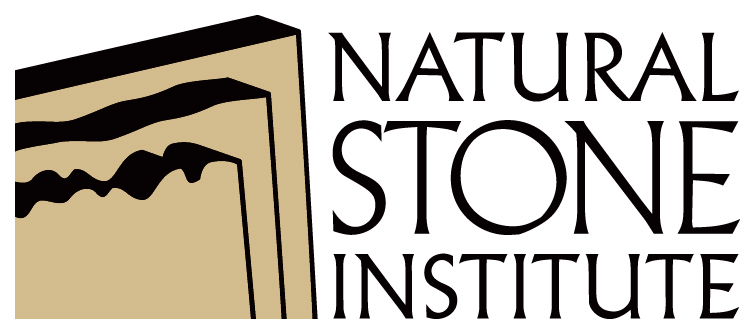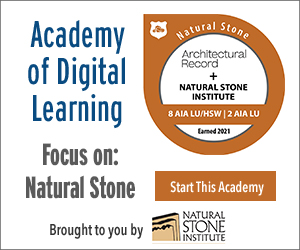Mother Nature's Green Building Material
 1 AIA LU/HSW; 1 PDH, LA CES/HSW; 0.1 IACET CEU*; 1 AIBD P-CE; 1 LFA CEU; AAA 1 Structured Learning Hour; This course can be self-reported to the AANB, as per their CE Guidelines; AAPEI 1 Structured Learning Hour; This course can be self-reported to the AIBC, as per their CE Guidelines.; MAA 1 Structured Learning Hour; This course can be self-reported to the NLAA.; This course can be self-reported to the NSAA; NWTAA 1 Structured Learning Hour; OAA 1 Learning Hour; SAA 1 Hour of Core Learning
1 AIA LU/HSW; 1 PDH, LA CES/HSW; 0.1 IACET CEU*; 1 AIBD P-CE; 1 LFA CEU; AAA 1 Structured Learning Hour; This course can be self-reported to the AANB, as per their CE Guidelines; AAPEI 1 Structured Learning Hour; This course can be self-reported to the AIBC, as per their CE Guidelines.; MAA 1 Structured Learning Hour; This course can be self-reported to the NLAA.; This course can be self-reported to the NSAA; NWTAA 1 Structured Learning Hour; OAA 1 Learning Hour; SAA 1 Hour of Core Learning
Learning Objectives:
- List the components of a new sustainable certification standard ANSI/NSC 373, which provides a life-cycle analysis (LCA) for dimensional stone products.
- Define the various components of an LCA.
- Discuss how compliance to ANSI/NSC 373’s national and international requirements for environmental, ecological, human health, and social responsibility in stone quarrying and production satisfies the growing demand for sustainable product declarations.
- Describe how the components of ANSI/NSC 373 are aligned with green building rating systems, such as LEED and the Living Building Challenge.
- Explain how the Chain of Custody Standard (NSC COC) for natural stone products ensures the traceability of certified stone throughout the supply chain, from quarry to gate.
This course is part of the Natural Stone Academy
Transportation and Chain of Custody
These credits require that the operators implement a management plan for efficient transportation of stone to and from a quarry or processing facility to the next step in the delivery process, whether it is to be processed, stored, or directly to a project site. The Chain of Custody certification is required for this credit and can be combined with certification to ANSI/NSC 373. For a product to be claimed as certified, there must be an unbroken chain of certified organizations covering every change in the legal ownership of product, from the certified quarry up to the point where the product is finished or sold to retail. The Chain of Custody Standard specifies the management and production requirements for chain-of-custody control with respect to sourcing, labeling (where applicable), and sale of products as certified to the standard.
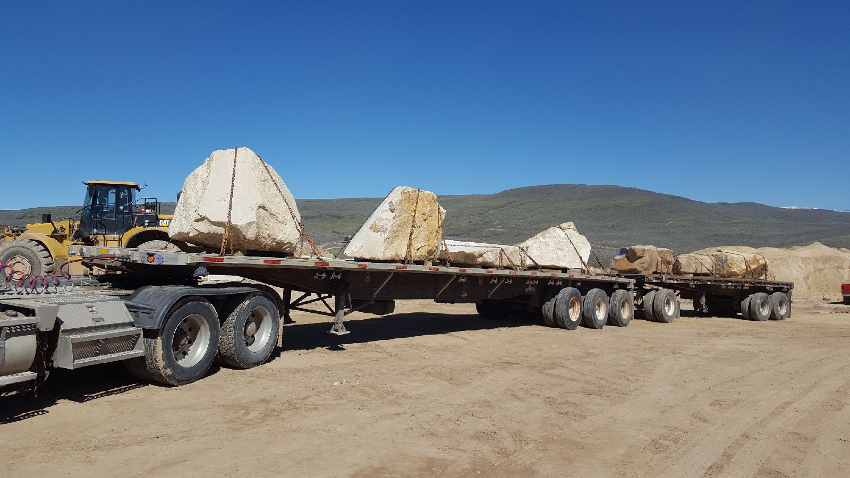
Stone being shipped from Mountain Valley Stone to Delta Stone Products
The standard defines and addresses the basic elements of a chain-of-custody management system, which includes:
- Quality management
- Material receipt and storage
- Volume control
- Sales and delivery
- General labeling requirements
- Outsourcing
The benefits of chain of custody are that it clearly enhances the market brand for a sustainable product and meets the most stringent of sustainable green building rating systems. In addition, by adopting more sustainable operation and business models, quarries and fabricators save money through optimized energy, transportation, and increased environmentally efficient practices.
Site Management
Within quarry operations there are various forms of mining, including open-pit, underground, boulder, etc., with open-pit being the most prevalent. There are best practices for their management that benefit surrounding communities outlined in this credit. These include the development of a site management plan that addresses all of the impacts to the site and surrounding community from these mining operations. The intent of this key criterion is to prevent stormwater pollution, provide dust control and hazardous material storage, as well as the installation of safety fencing. Site management includes the compliance to the highest levels of safe working conditions. For fabrication facilities, requirements also include the development of procedures for safe storage of equipment, recycling, and measures to control or contain occupational hazards, such as exposure to chemicals and dust.
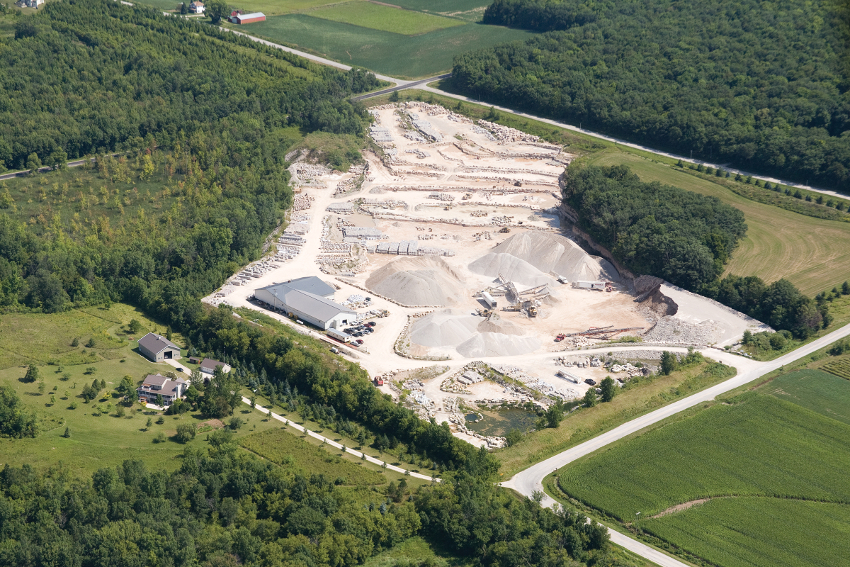
Photo courtesy of Halquist Stone Company
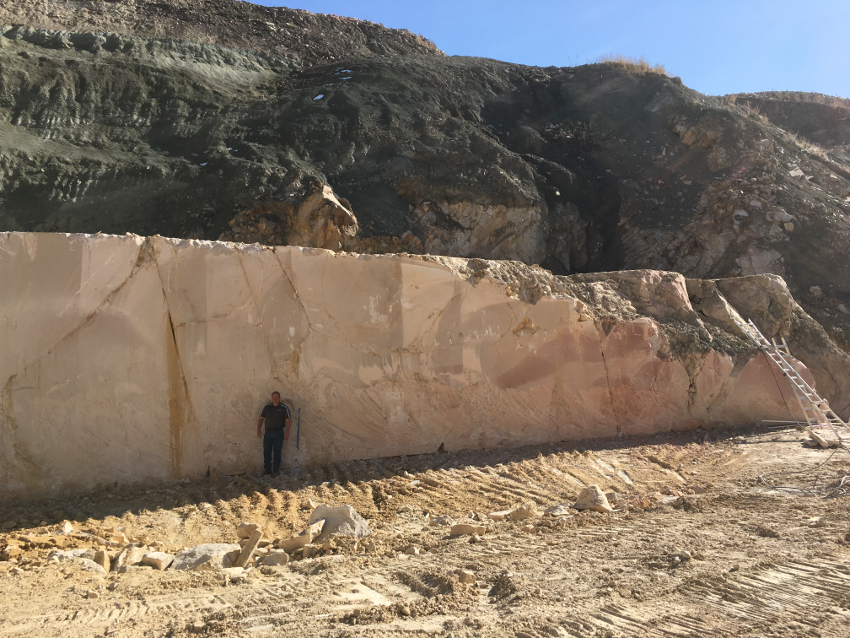
Photo courtesy of Mountain Valley Stone
Enhanced site management extends the definition of the boundaries of a site. These optional credits require the measurement of the impact from operations on human health or the environment. A site management plan is created that limits the physical boundaries of operations and measures the extended site. This includes the surrounding ecosystem identifying the impacts of operations on critical habitats, biodiversity, native plants, and water resources.

Photos courtesy of Michels Corporation
Land reclamation can result in recreational land. Seen here, the extraction process (left) and reclaimed land at Plymouth Pit, located on CTH S, north of STH 23, Town of Plymouth, Sheboygan County, Wisconsin.
Land Reclamation
As residents of Sheboygan County, Wisconsin, know, land reclamation for the purposes of providing recreational land is a boon for the community.
To assert the value of NSC 373, Michael Schumacher, marketing and sales specialist for Michels Corporation, says, “Pursuit of the NSC 373 certification was an easy decision, as it aligns with so much of what we stand for as an organization. There is a tangible benefit to both the environment and our clients. As the market continues its search for sustainable products, it is important for buyers to know that they are choosing a stone that was harvested and produced in an environmentally and socially responsible manner.”
The intent of this credit is to outline the post-closure reclamation plan that will allow for site cleanup, the removal of infrastructure, and ecosystem restoration for adaptive reuse. Additional points are achieved by responsible site closure and community engagement as well as exemplary ecosystem restorations.
Corporate Governance
Social accountability or equity is one of the three legs of the environmental stool. Along with environmental and economic development, equity is considered one of the three “Es” of sustainable development. Credits for corporate governance are based on the documentation of just labor practices, with prohibitions of child labor and clear anti-discrimination policies. These facilities allow employee participation in the development of community outreach activities and optional social accountability for fair hiring practices, employee educational opportunities, and corporate ethics.
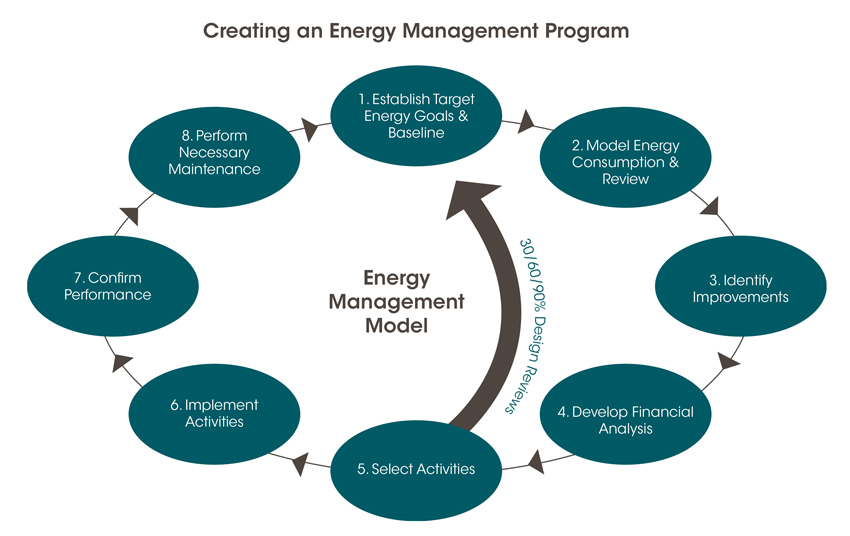
Image courtesy of Coldspring
Creating an energy management program


